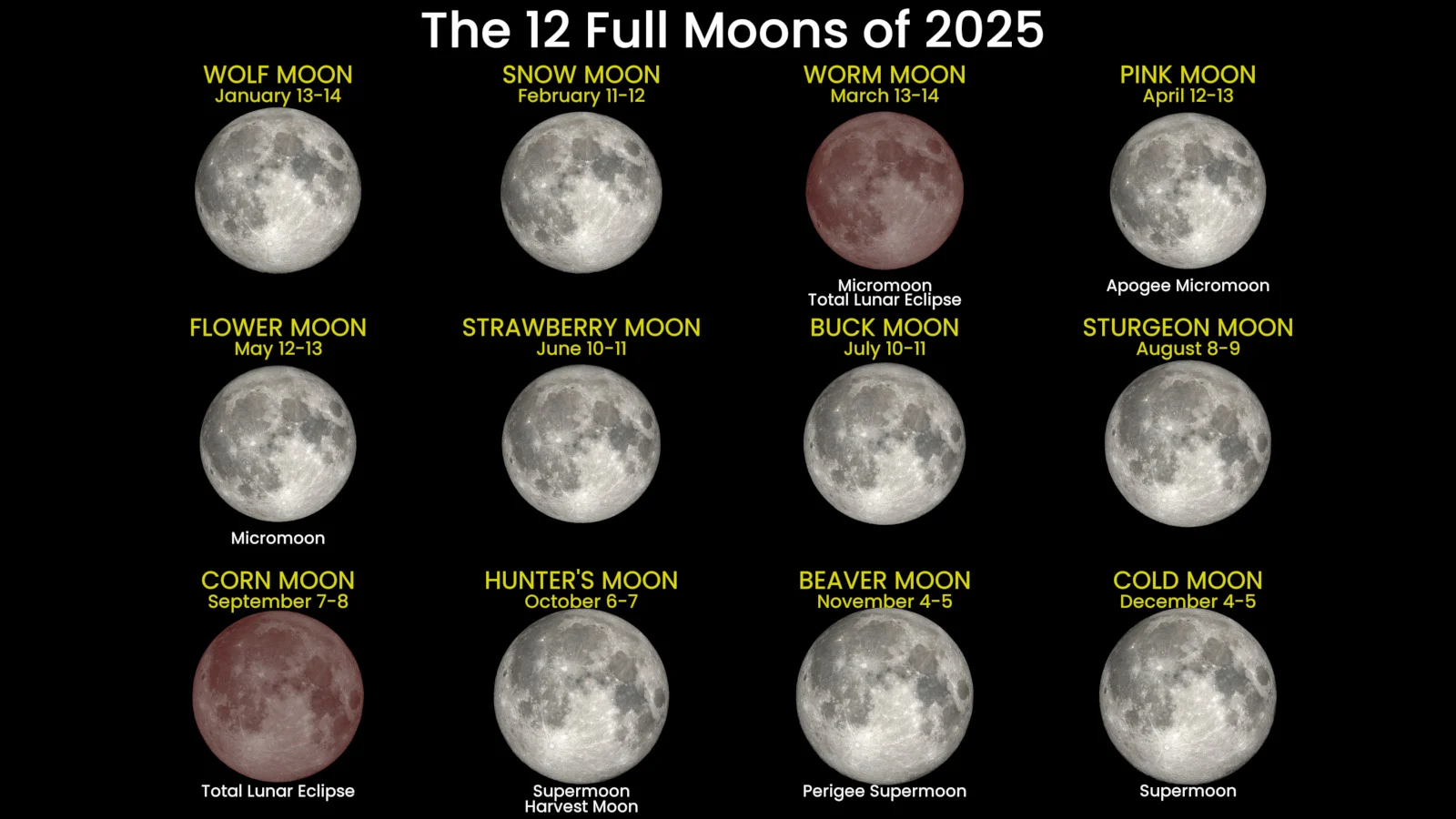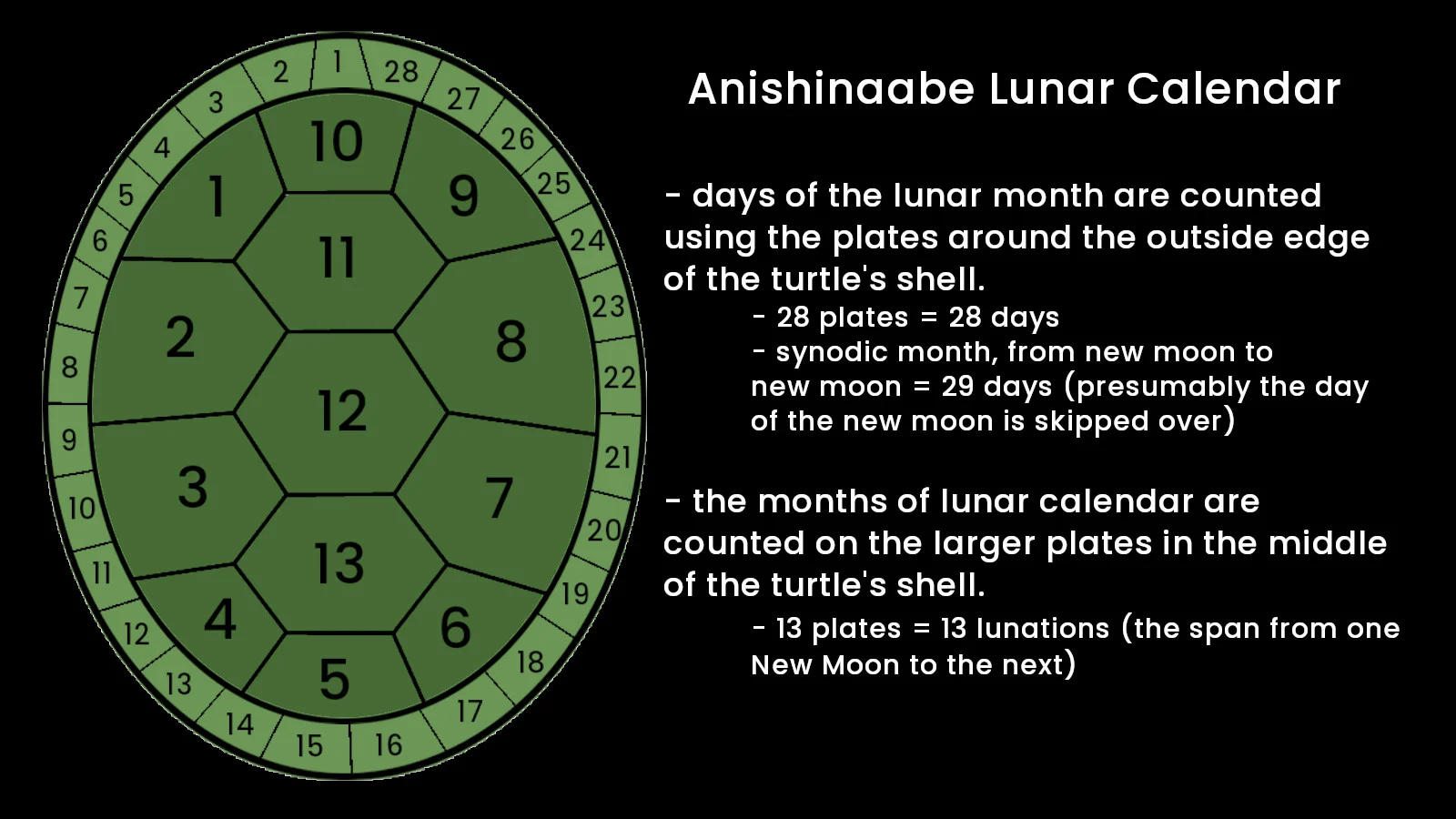
After the Full Sturgeon Moon, a hidden 'Black Moon' is coming up
We see a lot of Full Moons, but what's a 'Black Moon' all about?
Eyes to the sky this weekend to see August's Full Sturgeon Moon, but later this month, hidden from our view by the Sun, will be a 'rare' Black Moon. What's behind this phenomenon?
On the night of Friday, August 8, look for this month's Full Moon to be shining the sky from sunset until sunrise on the morning of Saturday the 9th.
However, if you're stuck inside that night, don't worry. The Moon will actually appear Full — with the Earth-facing side over 99 per cent illuminated by the Sun — anytime it is in the sky from the predawn hours Friday morning through until sunrise Sunday morning.
What is a Sturgeon Moon?
In the early 20th century, the Farmer's Almanac published a list of names, with one name for each Full Moon of the year. While a few were taken from Colonial and European folklore, the majority were inspired by the lunar calendar used by the indigenous peoples of the Great Lakes and what is now the US Northeast.
According to The Old Farmer's Almanac, the August Full Moon is typically known as the Sturgeon Moon.

The 12 Full Moons of 2025, noting their dates, their popular names, and whether each is a micromoon, supermoon, Harvest Moon, or if a lunar eclipse occurs. (Scott Sutherland/NASA's SVS/Fred Espenak)
"The name Sturgeon Moon comes from the giant lake sturgeon of the Great Lakes and Lake Champlain," the Almanac says. "[T]his native freshwater fish was readily caught during this part of summer and an important food staple for Native Americans who lived in the region. At one time, the lake sturgeon was quite abundant in late summer, though they are rarer today."
The name Sturgeon Moon is mostly used in popular culture to just describe the August Full Moon. However, it actually refers to far more than just this one phase of our lunar companion.
Like other advanced cultures around the world, the indigenous peoples of North America used a sophisticated lunar calendar to track time. The Anishinaabe, for example, took inspiration from nature for not only their calendar names, but also the pattern of the calendar itself. They visualized this pattern using the plates on the shell of a turtle — 28 small plates around the shell's edge corresponded to the number of days when the Moon is visible in the sky each lunar cycle, and 13 large plates in the middle of turtle's back corresponding to the number of lunar cycles in each the year.

The inspiration for the Anishinaabe lunar calendar. (Scott Sutherland)
Just as each month of the Gregorian calendar has its own name, the 13 cycles or "moons" of the indigenous lunar calendar also have their own names. Gregorian month names are a mix of deities, rulers, and their (old) numerical order within the calendar. The indigenous names for the moons were taken from the aspect of nature that affected the peoples' lives the most at that time of the year.
Coincidentally, the Sturgeon Moon lines up with the month of August in the Gregorian calendar. However, as shown below, it does not usually match up perfectly with the calendar month.

The phases of the 2025 Sturgeon Moon. (Scott Sutherland/NASA's Scientific Visualization Studio)
DON'T MISS: Look up! Perseids and a Planet Parade shine in August 2025
What is a Black Moon?
You've likely heard of a Blue Moon, in at least one of its two incarnations:
the third of four Full Moons that occur within the same astronomical season, or
the second of two Full Moons that occur within the same calendar month.
The reason these events are remarkable is that we usually only see three Full Moons in a season, and one Full Moon per month.
Every 2-3 years, though, the timing works out that there's a Full Moon that occurs within a few days after the start of a season. In that case, with the Moon's 29.5 day cycle, the following three Full Moons will also happen within that same season. Similarly, if a Full Moon occurs on the 1st or 2nd of a month, depending on what month that is, we can also see another Full Moon at the end of that month. (This can never happen in February, even on a leap year.)
During each lunar cycle, though, for every Full Moon, there is a corresponding New Moon that occurs. These are up during the day, essentially hidden from us by the glare of the Sun. However, tracking their frequency, we also typically have one per month and three every season.
Due to their exact timing, though, patterns emerge similar to the occurrence of Blue Moons, which are called Black Moons:
the third of four New Moons that occur within the same astronomical season, or
the second of two New Moons that occur within the same calendar month.

The three Full Moons and four New Moons of summer 2025, with the August Black Moon occurring on the 22nd or 23rd of August (depending on your timezone). (Scott Sutherland/NASA's Scientific Visualization Studio)
During the astronomical summer of 2025 (June 19/20 to September 22) there are four New Moons, which occur on June 25, July 24, August 23, and September 21. The third of those, coming up later this month, is therefore a seasonal Black Moon. The last seasonal Black Moon was in May of 2023, while the next will occur in August of 2028. The last calendar Black Moon was on either November 30 or December 30 of 2024 (depending on which time zone you live in), with the next one due on August 31, 2027.
Given that it isn't an official term used in astronomy, the name Black Moon has been used to describe a few other events, as well. Specifically, it is often used to refer to a February without a Full Moon (and this is only possible during the month of February). The last time this happened was in 2018, and the next time will be in 2037. Similarly, some have called it a Black Moon when there is no New Moon in February, which last occurred in 2014, and will happen again in 2033.
Although we won't be able to see this year's seasonal Black Moon, it does mark the night of August 22-23 as an excellent time to get out for some skywatching. In fact, without any moonlight in the sky, that could be the best night of the month to gaze up at the stars.
(Thumbnail image depicts the August 2025 Full Sturgeon Moon (left of centre), courtesy NASA's Lunar Reconnaissance Orbiter and NASA's Scientific Visualization Studio, while in the background are the four New Moons of summer 2025, also courtesy LRO and SVS, with the August 22/23 Black Moon highlighted for emphasis.)
